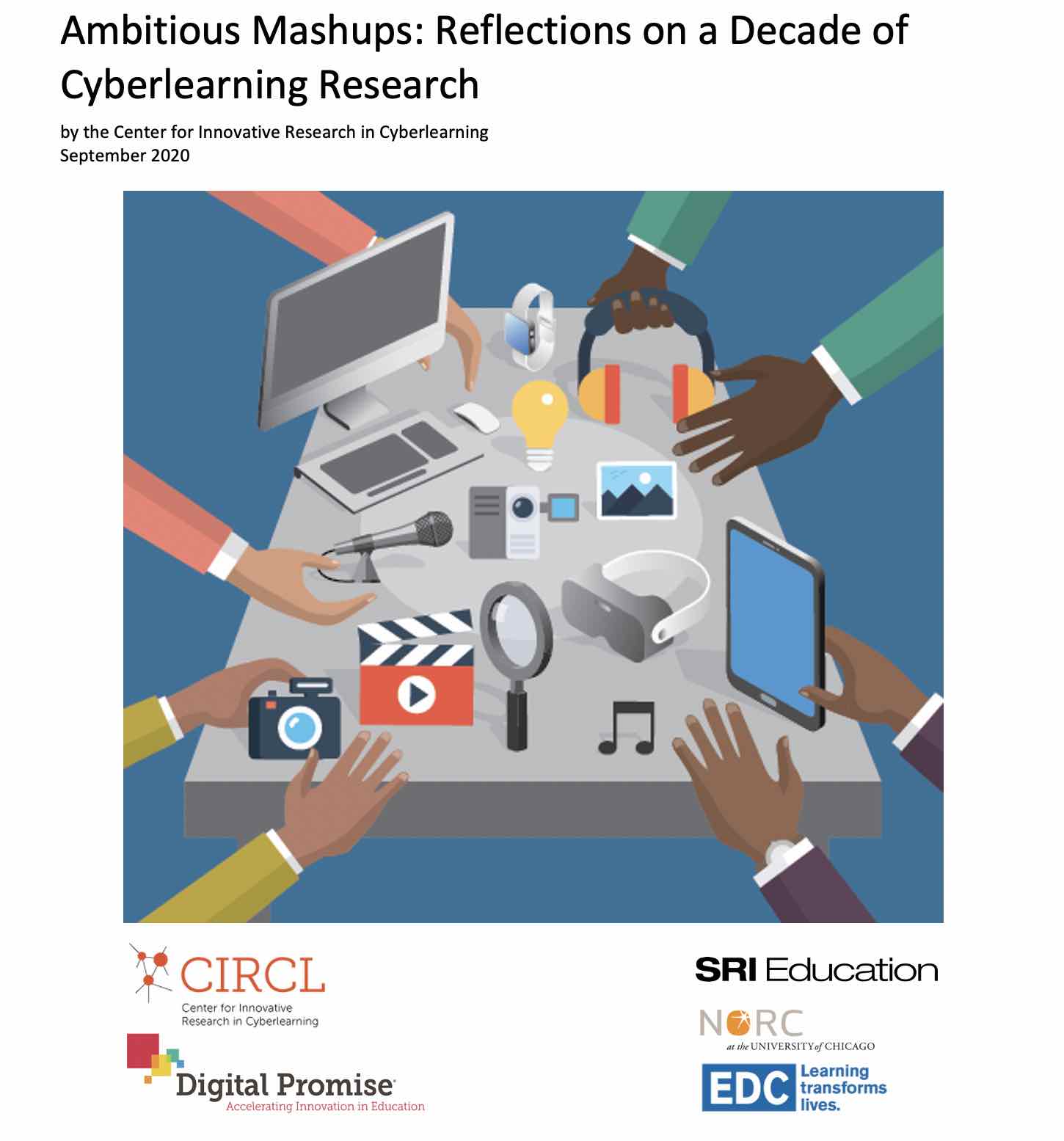 by Merijke Coenraad
by Merijke Coenraad
As an educator, you know better than anyone else how much educational technology is changing, particularly within the last year. The Center for Innovative Research in Cyberlearning (CIRCL) has worked with researchers for the last eight years as they have developed and investigated learning environments and technology that pushed the boundaries between technology and education. This community of researchers (and their partner teachers) has focused on how emerging technologies could be important for learners and adapted into the learning tools that would positively impact the education of students five or ten years later.
The recent Ambitious Mashups report examines the work researcher teams did. You might have also seen our previous post encouraging you to attend the Ambitious Mashups Webinar. In case you missed it live, you can watch it here. As we reviewed all of the projects, we discovered that they together researchers with computer science expertise, knowledge of learning sciences theories and methods, and a firm commitment to investigating equity. More than just focusing on emerging educational technologies, CIRCL projects had a strong focus on groups that are marginalized within society and underrepresented in STEM professions such as students from marginalized races, girls, low-performing schools, low-income settings, students with disabilities, and students who are learning English.
Looking across projects, the CIRCL team found that researchers weren’t concerned with just one technology, research method, or learning theory. These projects were ambitious, pushing the frontiers of research and technology and studying big learning goals, and they were interdisciplinary mashups, involving many elements together in novel integrations. Therefore, we have deemed the results of CIRCL to be ambitious mashups and worthy of review by not only researchers, but by educators as well. These ambitious mashups bring together a set of novel technologies in unimagined ways to tackle learning challenges. As educators who will soon be encountering these emerging technologies in the classroom, this report points to what you can expect from ed tech and questions to start asking yourself as the research ambitious mashups of the past eight years become the technologies of the next decade.
So, what did we learn from looking at all the cyberlearning research? Reviewing the research projects completed through CIRCL, the team identified five themes representing the elements of the cyberlearning research community:
- Artificial intelligence and Learning
- Learning Theories
- Research Methods
- Out-of-school-time Learning
- Trends at NSF and Beyond
In this series of posts, we are going to look across some of these themes because we at CIRCL Educators believe that there are many things to think about as the emerging technologies of cyberlearning begin to enter the classroom and there are already exciting findings that can influence your teaching!
After eight years of researching together, the CIRCL community has learned a lot about what it means to do innovative research at the forefront of educational technology. Being a CIRCL Educator, what have you learned? How can you create an ambitious mashup in your classroom? Tweet us @EducatorCIRCLS and tell us about your innovative technology use and stay tuned for future blogs in this series about CIRCL Ambitious Mashups.
How to cite this work
CIRCL Educator posts are licensed under a Creative Commons Attribution 4.0 International License. If you use content from this site, please cite the post and consider adding: "Used under a Creative Commons Attribution 4.0 International License (http://creativecommons.org/licenses/by/4.0/)."
Suggested citation format: [Authors] ([Year]). [Title]. CIRCLEducators Blog. Retrieved from [URL]
